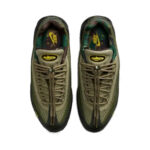Matching your fishing reel to your rod is crucial for a successful fishing experience. Whether your level of experience is great or you’re just starting, perfecting this combo can make all the difference in terms of performance, comfort, and catching fish. This tutorial will help you ensure that your setup is balanced and effective by dissecting the fundamentals of selecting the ideal fishing rod and reel combo.
Why Matching Your Reel to Your Rod Matters
Understanding why a good match is crucial helps one appreciate the details later on. Casting distance, accuracy, and control depend much on the mix of rod and reel. Poor performance, discomfort, and even equipment damage over time can all arise from a mismatched configuration. Basically, you will have more control when your rod and reel are precisely balanced, which will make fishing more fun.
Important Factors Affecting Reel Match to Your Rod
- Rod Power and Action
Understanding the rod’s power and action will help one match a reel with it. These two qualities define the rod’s behaviour under load and guide the choice of reel appropriate for your fishing rod and reel configuration.
- Rod Power is the strength and handling capacity of the rod for heavy or light lines. Rods usually fall into mild, medium, or heavy power categories.
- Rod Action explains the extent of the bending of the rod under pressure. Whereas slow action rods bend all the way, fast action rods bend largely at the tip.
Like a baitcasting reel, a heavy power rod with fast action is best matched with a reel meant for heavier lines and larger fish. Conversely, with a spinning reel meant for delicate fishing, a light power rod with slow action would be ideal.
- Reel Size
Another important consideration is reel size. To guarantee balance and performance, the reel’s scale should coincide with the rod’s.
- Usually measuring 1000, 2000, 3000, and so on, spinning reels are small freshwater fish like trout or panfish. A 1000 to 2500-size spinning reel is excellent for lightweight and light rods. A 3000 to 4000-size spinning reel will fit medium to heavy rods if you’re hunting for bigger species like bass or pike.
- Gear ratio and spool capacity define baitcasting reels. For medium to heavy rods, a reel able to manage heavier lines and provide better control for casting bigger baits is advised.
The basic guideline is to match the rod’s length and power rating to the reel’s size. For a balanced rod-and-reel combo, a light 6-foot rod could go nicely with a 2000 or 2500 spinning reel.
- Rod Length
Furthermore, the length of your fishing rod affects the kind of reel you should select. In close-range fishing, shorter rods enable more control; generally, longer rods offer more casting distance.
- Spinning reels in the 2000 to 4000 range perform nicely for rods between 6 and 7 feet.
- Consider smaller spinning or baitcasting reels for shorter rods, particularly those used for casting near buildings or confined areas.
The rod’s length and the reel’s spool size define your line casting capacity and, hence, your degree of control over your lure. A well-matched rod and reel system improves your casting distance and capacity to battle fish successfully.
- Compatibility for Line Weight
Make sure the reel you select corresponds with the rod’s advised line weight. Rods usually come with a label showing the perfect line weight range. For instance, if your rod is rated for a 6–12 lb test line, you should pick a reel capable of handling this range.
While baitcasting reels may handle heavier lines, spinning reels often perform better with lighter lines. Avoiding any line snapping or reel overloading problems, matching the line capacity of your reel to the line weight specification guarantees the rod and reel will function well together.
Types of Fishing Reels and Ideal Rod Combining Strategies
Understanding the fundamentals now will help you to break out which reel kinds fit particular rods:
- Spin Reels
Perfect for beginners or those who love light to medium fishing, spinning reels are flexible and straightforward to use; their ideal pairings are:
- Use a spinning reel of either 1000 or 2000 sizes for ultralight rods. Perfect for freshwater tiny fish catch-all.
- Fish for species like trout or bass will find a 2500 or 3000-size spinning reel appropriate.
- Bigger fish would want a 4000-size spinning reel for medium to heavy rods.
Spinning reels benefit most general fishing uses, particularly for casting lighter baits in open-water fishing. For many various scenarios, a spinning reel matched with the appropriate rod produces a flexible rod-and-reel combo.
- Baitcasting Reels
Though they call for greater ability to master, baitcasting reels provide more accuracy and control. For heavier setups, they are perfect; they are also often matched with:
- Lures like crankbaits or spinnerbaits, which require more speed and control, will be a good fit on a baitcasting reel with a high gear ratio.
- If fishing for bigger species in freshwater or saltwater, choose baitcasting reels employing hefty lines and big baits.
If you aim for larger fish, including pike or largemouth bass, a baitcasting reel coupled with a hefty rod is the best approach to guarantee a solid and efficient fishing rod and reel configuration.
- Reels for Flying Notes
Fly reels are primarily meant for this use, as fly fishing requires a special combination of rod and reel.
- Fly reels are linked to the rod depending on weight categories, including 3wt, 5wt, or 8wt. To achieve an ideal balance, ensure the reel matches the rod’s weight rating.
Fly reels are specific and should not be used with other rod kinds. The delicate casting technique in fly fishing depends critically on a fly rod and reel combo.
Conclusion
Reaching a balanced, helpful arrangement that improves your fishing experience depends on matching your fishing reel to your rod. A fishing rod and reel combination that maximises performance and comfort on the water can be produced by weighing elements such as rod power, reel size, rod length, and line compatibility. Making the correct decision will help you cast more successfully, fight fish confidently, and finally land more catches, whether your reel is spinning, baitcasting, or fly reel. Thus, ensure your rod and reel are exactly matched the next time you’re ready to fish, then savour the seamless, easy experience that results!
Spend time making your gear fit you. Fishing is more about the correct tools than it is about technique. Your day on the lake will be much more efficient and fun if your rod and reel match.



